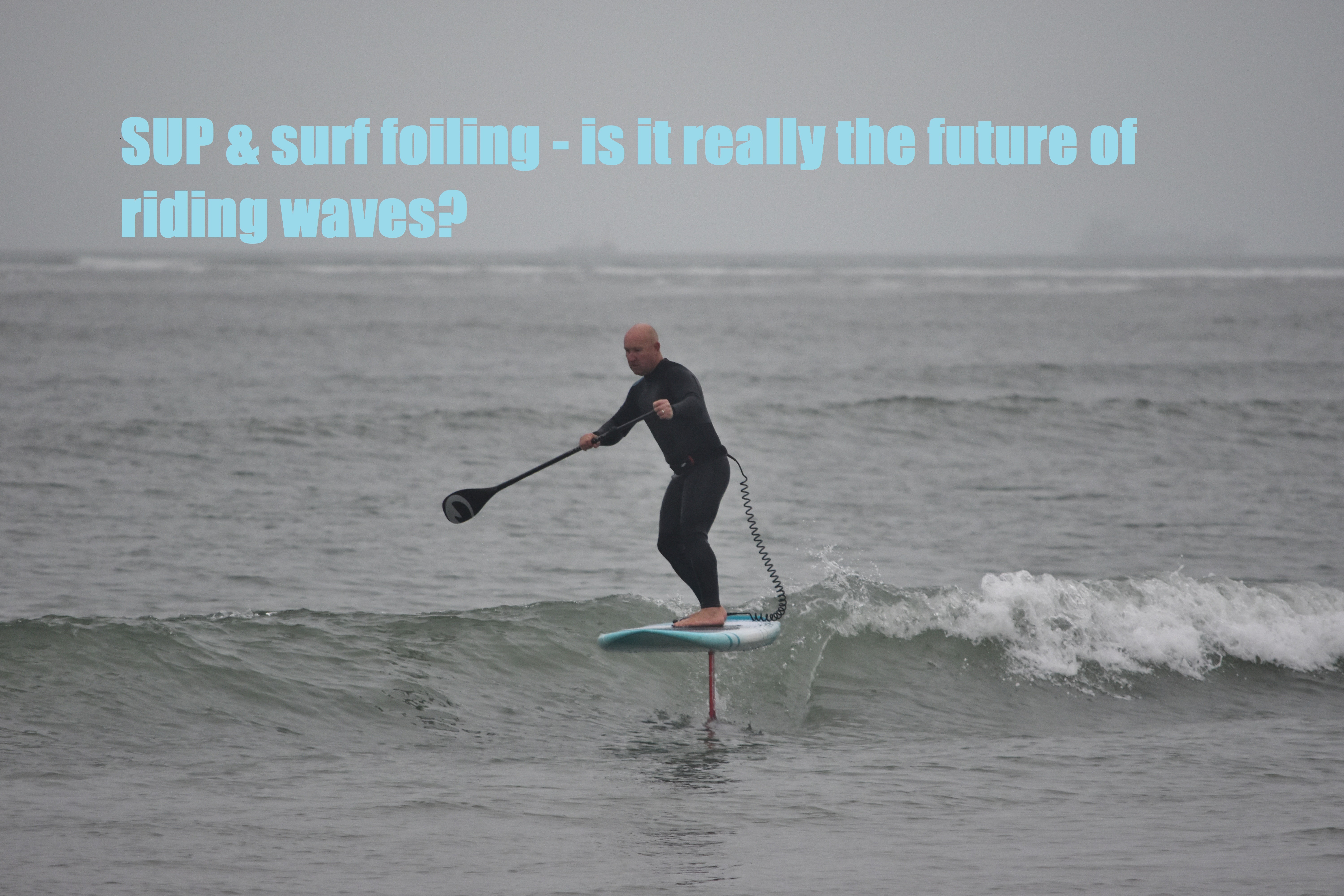SUP and surf foiling seems to be getting ever more popular. Not quite as booming as wing foiling but both disciplines are up there. We caught up with the guru of all things foil from our sister site foilshop.co.uk to see what the goss is.
SUP & surf foiling – no need for quality waves.
‘Unfortunately, the UK isn’t blessed with consistency when it comes to waves. Any long time surfer will tell you this. Sure, we get a few sessions through the year. But these mostly occur during the off season when it’s Baltic. Most everyday riders are far from beaches. And wouldn’t fancy tackling these conditions anyway.
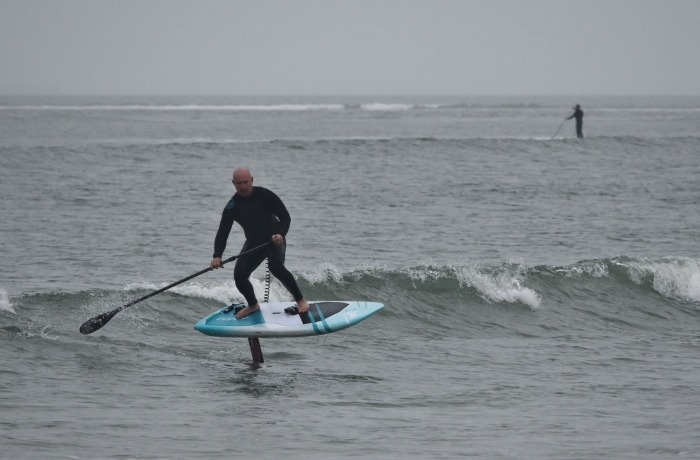
Stand up paddle boarding has taken the onus off requiring quality swell. But experienced riders definitely want something more. The problem with SUP surfing, for instance, is as you improve you suddenly want better conditions. So it’s back to square one.
We get lots of days, on all coasts, where knee high waves roll in. Oftentimes these so called waves are of the slower variety. Surfers really struggle with conditions like this. As do stand up paddle surfers. The problem is both craft are stuck to water and therefore suffer from friction and drag. Friction and drag equate to loss of speed. This in turn means lots of effort for little reward. Or you bog. Adding a foil turns this on its head. And then some!’
Enter the hydrofoil.
‘With the right foil a fat, slow ankle to knee high wave is all you need. In some cases, glorified chop will often do. Personally, I prefer still holding a paddle as this gives more oomph to take off. If you’re prone surf foiling then a refined arm paddling technique is needed.
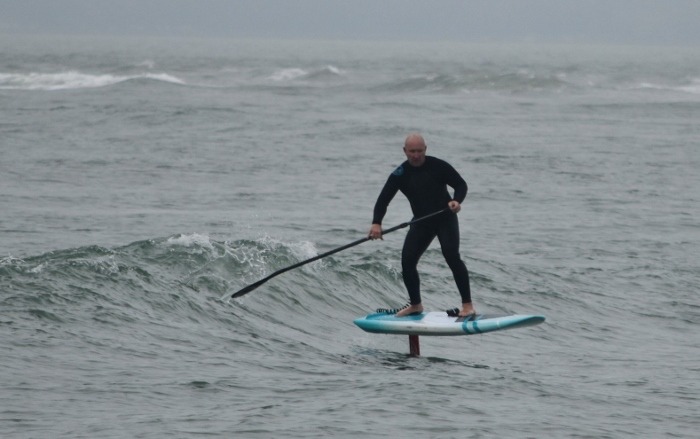
At my local, I’m often confronted with an inside section that’s smaller than the outside. Our sandbank is quite long, stretching a mile or so out to sea. In SUP surfing mode I’d paddle the whole way to score decent waves. Now I only have paddle a few yards to reach a satisfactory SUP foil take off zone.
As the wave reforms, it gives a little vert to shove me forwards. And suddenly I’m flying. The efficiency of the foil means I’m fast, don’t stick and can enjoy long rides. I can turn and cut back, just as with stuck to water riding. And when done I can pull off and pump back out to the next wave. The only prohibiting factor here is becoming fatigued. If you’re fit enough then riding and pumping between waves on foil can be endless.’
SUP and surf foils: the right kind is important.
Back in the day when I started (four or so years back), foils were quite small and mostly low aspect, shovel esque. Nowadays low aspect foils are still available. But it’s the thinner, high aspect types riders are turning to. Me included.
High aspect foils are more efficient, faster, pump better and (most importantly) glide for miles! They take a little more effort to lift but once up are much easier, more fun, and offer far better efficiency than low aspects. I will add I still plump for a foil that has low stall/take off speed as this is imperative. Less than perfect waves, and me being 90kg, means I need this for more fulfilling foiling. A foil with a higher take off speed wouldn’t do me any favours 90% of the time.’ When the conditions improve I can always swap my go to foil out for something with even more performance.’
Is SUP & surf foiling the future for most wave riding?
‘I live by the motto: ‘tools for the job’. I indulge in a broad range of watersports and choose the most appropriate for the conditions on the day. I love foiling but aren’t evangelical about it to the point of chopping in all my other gear. I prefer options.
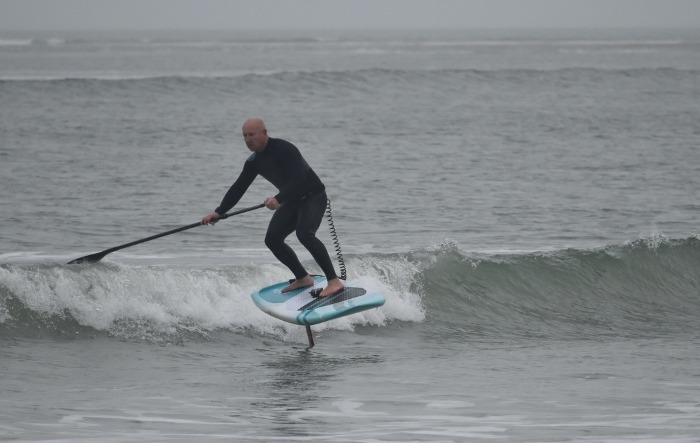
That said, there’s no question SUP and surf foiling increases my wave session hit rate substantially. And with hydrofoil design improving all the time the threshold of when to foil and when to fin is shrinking. There are foil riders now tackling waves of consequence without batting an eyelid. And this performance does filter down to the everyman and woman and their kit.
Foiling has certainly changed watersports. You’re now guaranteed a session whatever. No more hanging about on the beach. If there’s a sniff of a ripple you’re good to go. The biggest task potential foilers are faced with is choosing the gear. I get questions all the time. Yet even with answers I give, designed to not blind by science, the concept’s aren’t always grasped. Which is understandable. Until you’ve flown above water you don’t really get it. Having lifted and levitated, however, the penny drops. I don’t mean to patronise here. It’s just the way it is.
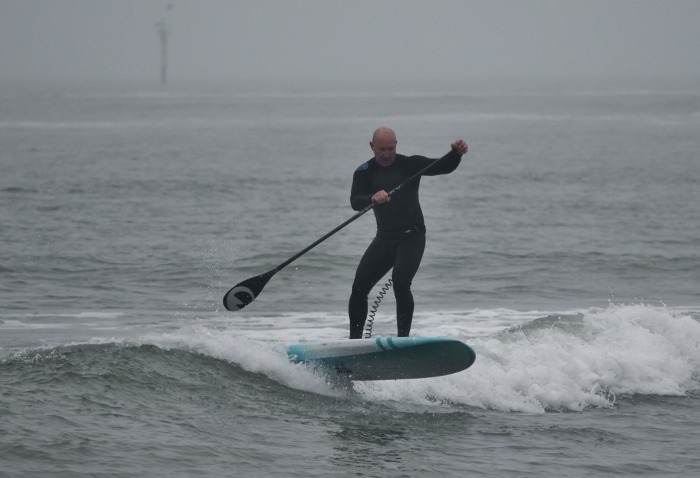
The cost of foils and associated gear is fairly expensive. For a potential new recruit, it’s a lot of dough to fork out on equipment you don’t quite understand. Plus, there’s hesitation surrounding whether he/she will like foiling. Not everyone does. Yet the majority do. Particularly if you stick with it through the learning phase and dial in the foiling skills needed.
The foiling bottom line.
Hydrofoils have changed the face of watersports forever. Wing foiling is the attention grabber, and it’s not hard to see why. Using the wind to ride out to sea before heading back in on a wave, flagging the wing, is almost like being towed onto surf. It’s a bit like cheating. Some of the wave rides I’ve had wing foiling have been exceptionally long.
But the wind doesn’t blow every day and I love riding waves. If it’s not solidly pulsing, which is often, I grab my SUP or surf foiling gear. And I’m good to go. Stoke guaranteed!
If you’ve never tried foiling but are thinking about getting involved then do it! It mightn’t be for you but I expect it will be. and before long you’ll be scoring sessions on days when you’d be elsewhere instead.’
Thanks to Oli Lane-Peirce for the images.
You can find out more about all sorts of foiling via the following links –

